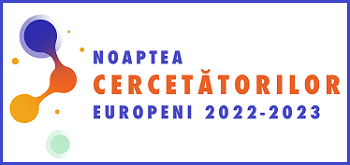| Articolul precedent |
| Articolul urmator |
 |
 483 483 15 15 |
| Ultima descărcare din IBN: 2023-10-31 12:22 |
 SM ISO690:2012 SM ISO690:2012CERNEI, Natalia, GRABOVSCHI, Ion, ARNAUT, Oleg, ŞANDRU, Serghei, CHESOV, Ion, MOGILDEA, Victoria, BALTAGA, Ruslan. Ozone Therapy Efficiency as Complementary Treatment for COVID-19 Intensive Care Unit Patients. Controlled Unicentric Clinical Study. In: Nanotechnologies and Biomedical Engineering, Ed. 5, 3-5 noiembrie 2021, Chişinău. Chişinău: Pontos, 2021, Ediția 5, p. 127. ISBN 978-9975-72-592-7. |
| EXPORT metadate: Google Scholar Crossref CERIF DataCite Dublin Core |
| Nanotechnologies and Biomedical Engineering Ediția 5, 2021 |
||||||
|
Conferința "Nanotechnologies and Biomedical Engineering" 5, Chişinău, Moldova, 3-5 noiembrie 2021 | ||||||
|
||||||
| Pag. 127-127 | ||||||
|
||||||
| Rezumat | ||||||
The emergence of the Pandemic COVID-19, with a fatal outcome in a large proportion of cases, created the need for development of therapeutic protocols and identification of effective treatment methods. Supportive measures remain the cornerstone for treating COVID-19 in the absence of specific therapies. Ozone may exert its antiviral actions and ozone therapy has been demonstrated therapeutical usefulness in influenza and novel viruses. Ozone therapy consists in the administration of a mixture of ozone and oxygen, called medical ozone, which has been used for over a century as an unconventional medicine practice for several diseases. Medical ozone rationale in COVID-19 relies in the possibility of contrasting endothelial dysfunction, modulating the immune response and acting as a virustatic agent. So far, no prospective controlled study was performed on studying the influence of major haemozonetherapy on COVID19 patients in ICU settings. We performed prospective, controlled, randomized study on 100 patients with COVID19 admitted to ICU divided in 2 groups: LO - ozone therapy LC-control. Major outcomes (mortality) and secondary outcomes (Length of stay, NIV duration, MV duration, inflammatory, oxygenation profile) were compared. No statistical difference was observed between ozone therapy and control group with regards to primary outcome of the treatment, even if absolute numbers indicate rate of mortality 34% in LC vs 26% in LO group. As well no difference in duration of length of stay, duration of NIV, MV was observed between two groups. |
||||||
|
Google Scholar Export
<meta name="citation_title" content="Ozone Therapy Efficiency as Complementary Treatment for COVID-19 Intensive Care Unit Patients. Controlled Unicentric Clinical Study"> <meta name="citation_author" content="Cernei Natalia"> <meta name="citation_author" content="Grabovschi Ion"> <meta name="citation_author" content="Arnaut Oleg"> <meta name="citation_author" content="Şandru Serghei"> <meta name="citation_author" content="Chesov Ion"> <meta name="citation_author" content="Mogildea Victoria"> <meta name="citation_author" content="Baltaga Ruslan"> <meta name="citation_publication_date" content="2021"> <meta name="citation_collection_title" content="Nanotechnologies and Biomedical Engineering"> <meta name="citation_volume" content="Ediția 5"> <meta name="citation_firstpage" content="127"> <meta name="citation_lastpage" content="127"> <meta name="citation_pdf_url" content="https://ibn.idsi.md/sites/default/files/imag_file/127-127_30.pdf">













